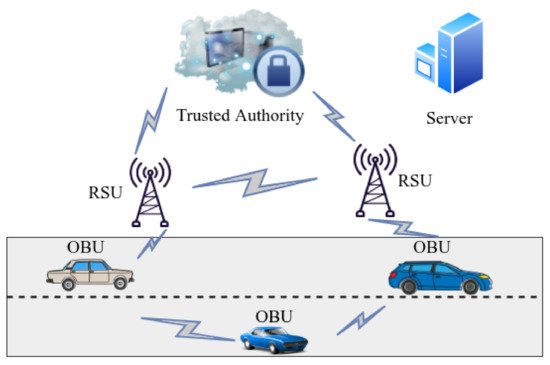A Vehicular Ad-hoc Network (VANET) comprises a group of moving or stationary vehicles connected by a wireless network. VANETs play a vital role in providing safety and comfort to drivers in vehicular environments. They provide smart traffic control and real-time information, event allocation.
- intelligent transportation system
- VANET
1. Introduction
In recent years, due to economic and population growth, a rapid increase has been observed in the numerous vehicles. This has automatically increased road accidents, driver exhaustion and worsening of roads and support framework. According to a healthcare report by the World Health Organization (WHO), the main cause of deaths of people between 15–29 years is road accidents, also 1.3 million people are killed in accidents annually worldwide [1]. This rapid increase in traffic accidents can be managed by practicing the latest technology to report real-time information to the driver about vehicle health parameters, circumstances of roads, traffic jams, and forewarning of weather. Progressive advancement of Intelligent Transport Systems (ITS), associated vehicles internet of vehicles known as the (IoV) [2] is the fundamental of communication required to share data about crisis and developing traffic dynamics has been expanded.
A current study by the IoT tracker service declared that the linked car market would expand by an additional 270% by 2022 including more than 125 million cars [3]. This also expands the size and complication of current working vehicle ad hoc networks, usually known as VANETs. In addition to running challenges, the rapid proliferation of vehicle connections has also created critical security and information confidentiality concerning the evolution and expansion of VANETs design. From the literature review, it can be asserted that some threats related to privacy and infringing location privacy are more dangerous as they can lead to more advanced physical attacks such as trial and robbery.
In the next three subsections, we first explain the generic VANET architecture and then its unique characteristics. We also present the motivation behind the survey and the contributions of this work.
2. Generic VANET Architecture

2. VANETs Characteristics
2.1. Mobility
2.2. Storage and Computing Capabilities
2.3. Real-Time Limitations
2.4. Dynamic Network Topology
2.5. Frequent Network Disconnections
2.6. Communication Medium
2.7. Radio Transmission Depletion
3. Motivation and Contribution
In VANETs, the connected vehicles and nodes of the VANETs environment contain road-side sensing and transmitting modules, traffic monitoring by the government, infotainment systems, and control systems etc. These devices share sensitive data with different protocols. VANETs are highly vulnerable to internal and external security attacks. For example, attackers can use communication to steal personal information such as passenger details, travel times, tracked routes and destinations, range, and main locations. Furthermore, this data can be used to create selected personal profiles to launch multiple attacks. These attacks can be directed towards specific users or interfere with the whole transportation system, hence blocking the flow of traffic over a vast area. For example, movements can track or disrupt through spying on the victim’s location data [8]. Therefore, location privacy in VANETs is an important design challenge to be considered.
This entry is adapted from the peer-reviewed paper 10.3390/fi13040096
